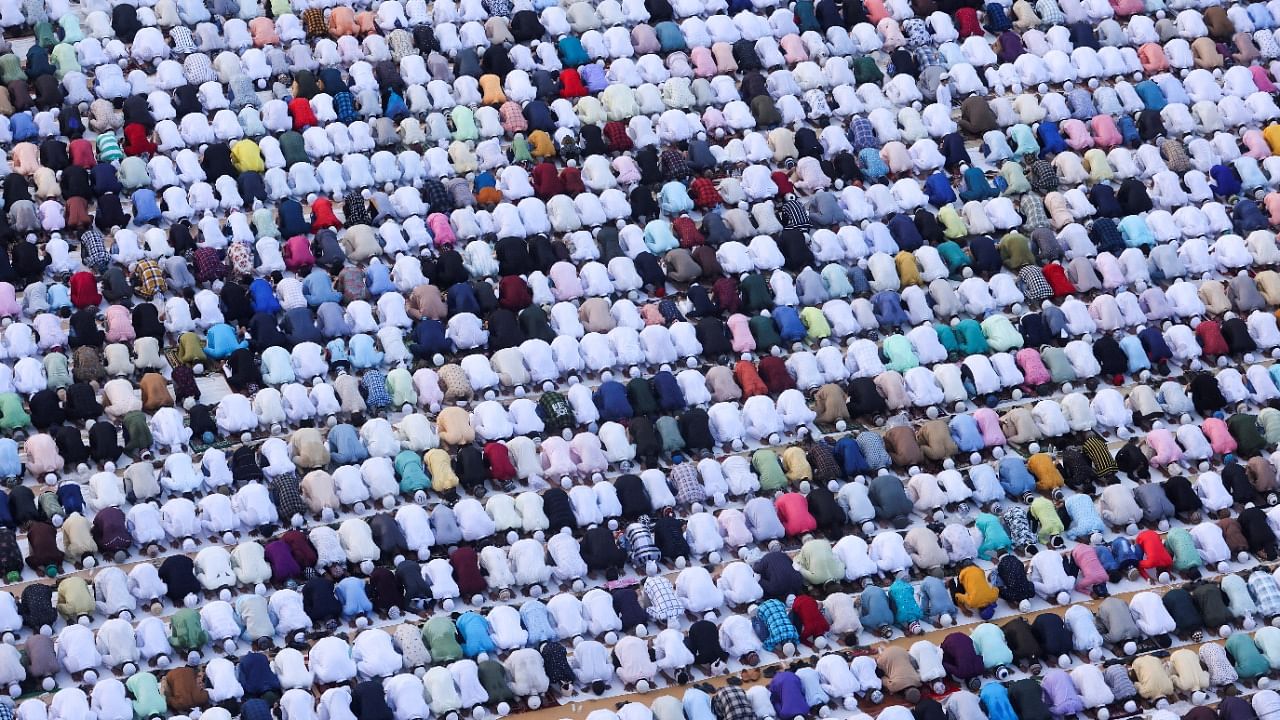
(They were Muslims, but they weren’t ants; they were Muslims, they weren’t chicken; attention, south of the Indus, after hundreds of years of citizenship, they were not the ruins of the soil)
Who were/are Muslims? This question has become more relevant in India today than even at the inception of the nation in 1947, when Independence came, along with the acceptance of a two-nation theory.
Several instances of majoritarian violence have occurred against the minorities, particularly Muslims, affecting their social and economic lives. On the eve of Eid, communal clashes erupted in even relatively peaceful Jodhpur, leading to a long imposition of curfew there. In recent times, such violence has been seen in many states, raising doubts over minorities’ rights and the ‘idea of India’ in our times.
Commenting on the phenomenon, Professor Ashutosh Varshney remarked that he had studied communal riots since the 1990s, but the current violence against Muslims is very different. Ominously, he warned that India might be entering the stage of pogroms now.
The attack on the identity, livelihood, culture and religious practices of Muslims reveal the fault lines in the founding fathers’ visions. Noted Hindi poet Devi Prasad Mishra in his poem ‘They were Muslims’ writes of the journey of Muslims in India, how they perceived India, and how they assimilated into the culture of India, revealing the diverse and accommodative roots of the country. Moreover, it settled the long-standing question of identity of Muslims and their claim on the Indian motherland.
These attacks and the growing majoritarian violence compel us to look to the ‘idea of India’ envisioned during the freedom struggle and after the adoption of the Constitution.
Protesting against K M Munshi’s proposal that the clause forbidding discrimination against minorities in admission to State educational institutions and prohibiting compulsory religious instruction to them be referred to a committee for further consideration, B R Ambedkar said: “Rights for the minorities should be absolute rights. They should not be subject to any consideration as to what other parties may like to do with minorities in their jurisdiction.”
Lamenting on the fact that the question of minorities was not made a part of the work of the committee appointed to draft fundamental rights, Rajkumari Amrit Kaur said: “Suitable provisions should be made for the individual and community belonging to minorities for their realisation of rights, freedom, individual and social growth.”
As British historian and politician Lord Acton had noted: “One prevailing evil of democracy is the tyranny of the majority, and the test of liberty in a democracy is the security of the minorities.”
With the growing intolerance towards minorities, rising hate speeches by politicians from ruling parties, and the ineptness of public authorities, securing minority rights tests the effectiveness of the Constitution.
Constitutions coordinate the expectations of the officials and citizens regarding the appropriate boundaries of public authorities, writes American political scientist Barry Weingast. The boundaries get blurred when State and non-State actors join to attack a set of people for their food, clothes and individual choices.
Data from the National Crime Records Bureau reveals that incidents of communal violence doubled from 438 in 2019 to 857 in 2020. The forms of violence include economic, social and communal, going to the extent of lynchings. India has witnessed the rise of the lawless mob, which has attacked Muslims, Dalits and Adivasis with impunity, writes Arvind Narrain in his book India’s Undeclared Emergency.
According to statistics from IndiaSpend, hate crimes have risen after the Narendra Modi-led BJP came to power at the Centre.
Undoubtedly, the Constitution contains several provisions that are meant to protect the minorities and it also provides sustenance for the functioning of institutions to preserve the plural order of Indian society.
However, nearly seven decades after the constitutional republic was inaugurated, the minorities in India have expressed a feeling of alienation, writes Bishnu N Mohapatra in his essay Minorities & Politics.
The gap between the constitutional theory and practice amidst the rising violence is a major concern for all those who believe in the Constitution. Constitutional faith will only be restored when these gaps are filled with the assertion of minorities’ rights and the State’s endeavour to promote and protect these rights.
As Ambedkar said, no matter how good a Constitution is, it will not work without the sagacity of the masses, the political morality of those who are in power, and the creativity of the judiciary, all of which are now like Schrodinger’s Cat. You can see them in speeches but not in actions.
(The writer is a Samta fellow and works on constitutional literacy through Constitution Connect)